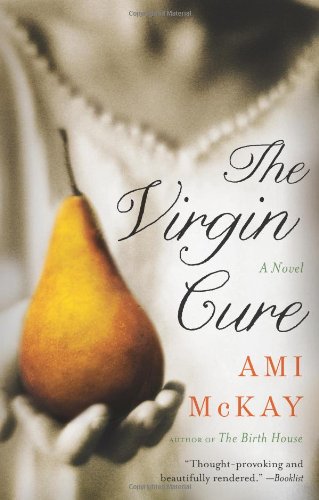The Virgin Cure
Ami McKay’s second novel is set in the tenements of lower Manhattan about five years after the end of the Civil War, in the middle of what Mark Twain coined the “gilded age,” so called because beneath the veneer of wealth and civility lies the basest of human desires and behaviors. It is a time when men of all classes visit prostitutes and the spread of venereal disease is rampant. In that time, even educated people think that to deflower a virgin will cure the French pox; many young girls are sold into such service only to die of the illness themselves.
One such girl is Moth, the twelve-year-old narrator of the story. Her voice is irresistible as she tells how her mother sells her into the service of a cruel mistress who beats and abuses her; how she escapes into the clutches of a kind but mercenary madam; how she meets one of the earliest female doctors, Dr. Sadie, who shows Moth other possibilities; and how Moth somehow retains her innocence, though she is deflowered by a rich man who pays well for the privilege.
This is a powerful story told wonderfully well. The writing is rich and filled with period details, but it is the emotional truth of the story that haunts the reader long after the book is closed. Moth’s longing for love, especially the love of her mother, rings true. Highly recommended.










